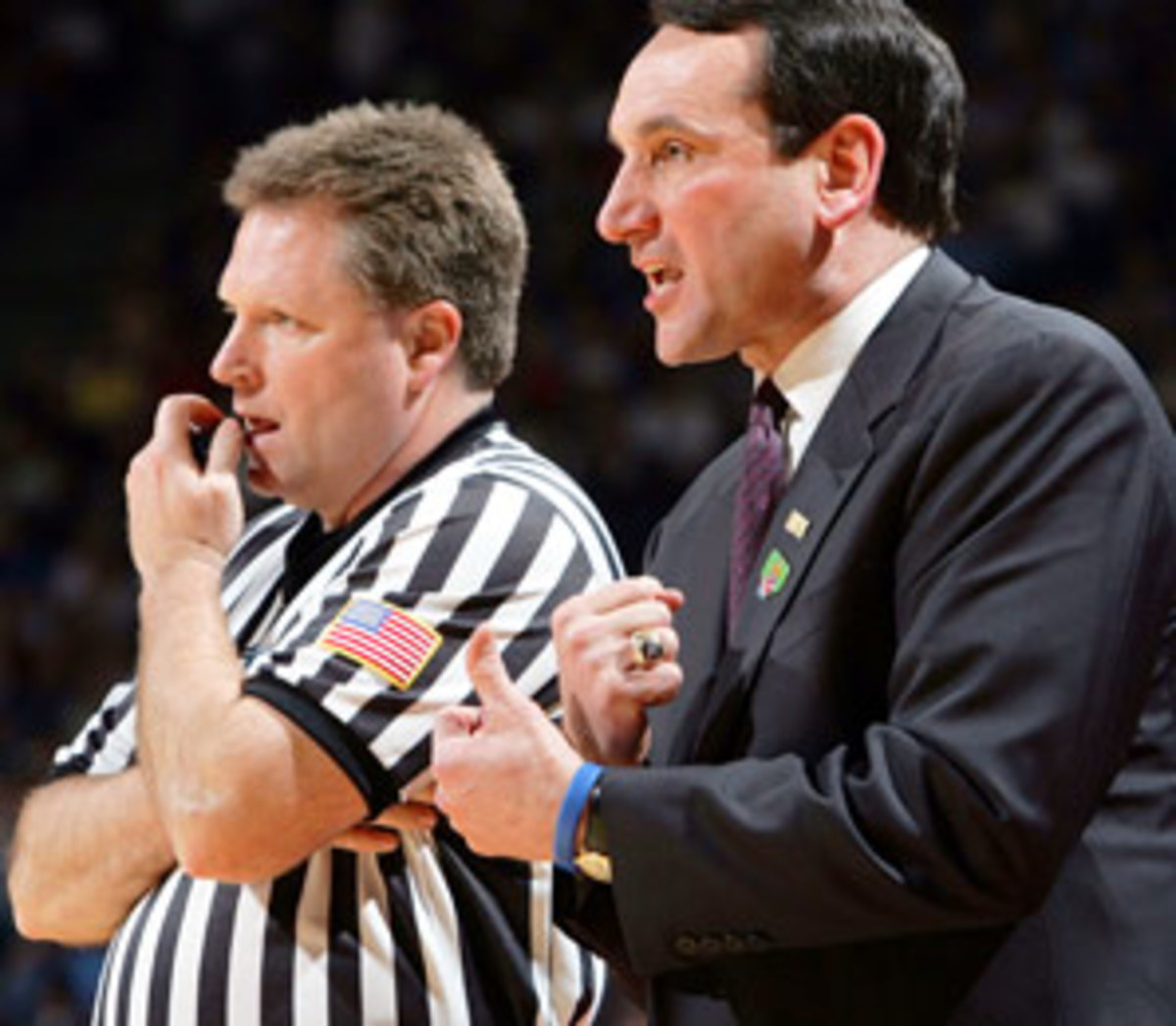
Vanishing traditions in sports
As I write this, I'm drinking from a World Cup-themed can of Coke that features a white soccer ball festooned with black pentagons, the kind of ball that hasn't been used in the World Cup since 1974 but is still depicted on every youth-league bumper magnet, in every episode of Bob the Builder and on the sleeve-patch logos of the Champions League, Major League Soccer, Spain's La Liga and Italy's Serie A.
The world has decided that the black-on-white soccer ball is what a soccer ball looks like, choosing to ignore the fact that soccer balls don't look anything like that, and haven't for three decades.
As logos go, that soccer ball is a charming anachronism, a reminder of a world that no longer exists, like the NBA logoman in his mid-thigh shorts, or the Major League Baseball logo, with his super-short sleeves circa 1968, and his batting helmet bereft of earflaps.
But that soccer ball is something more. It's part of a sports landscape that is vanishing so slowly, over so many decades, that we scarcely notice its disappearance. The melting of the polar icecaps is a good analogy, though it's of far less importance than, say, the long goodbye of zebra stripes on referees.
Sure, we still call refs "zebras", but hardly any zebras wear traditional black-and-white stripes anymore. Last year, NFL officials wore throwback AFL referee shirts with orange-and-white stripes or those strange new shirts -- a narrow black stripe flanked by two wide ones -- that made them looked like trick-or-treaters in skeleton costumes.
NBA refs have long worn T-shirts, so that only NCAA and NHL referees still dress like a ref is supposed to, meaning that someday soon -- if they haven't already -- your children will ask how Foot Locker employees came to wear such ridiculous shirts.
Auto racing's checkered flags are still checkered, black-and-white as a chessboard. Which is more than can be said of a chessboard. At the 2010 World Chess Championships in Sofia, Viswanathan Anand of India defeated Veselin Topalov of Bulgaria on a board of brown and beige squares.
This color scheme -- along with green-and-white -- has become standard in tournament chess. But let's set aside the question, then, of why the player who goes first in chess is still White and the player who goes second in chess is still Black. Let us wonder, instead, what we're to sing when the Yes song "I've Seen All Good People" comes on the classic rock station in the car. Not, apparently, "Move me on to any black square, use me any time you want ..."
We think of objects as always having been a certain way, when many of them haven't been that way for years. My daughter's teacher remarked that most five-year-olds no longer arrive in kindergarten knowing how to tie their own shoes. One reason: Velcro. Children no longer wear shoes that require tying.
And so it is with bowling. The shoes still tie, but the ball of popular imagination -- a black orb resembling a cartoon bomb -- doesn't exist in many alleys, or is the dour exception in rack after rack of Jolly Rancher-colored projectiles. Still, if anybody bowls in a sitcom or movie or cartoon, he or she will likely be bowling the old Fred Flintsone model, in the way that Checker cabs still get hailed in movies set in New York, though for two decades the cabs of that city have been stifling Crown Vics.
There's nothing wrong with any of this. I myself would rather roll a "pearlized" bowling ball in candy-apple red than something that looks like a Civil War cannonball. But all this progress can be overwhelming. The standard NFL kicking tee is not a tee at all -- not the kind I last kicked on, the kind that rested on three legs. The Super Bowl now kicks off with a two-cupped slab of rubber --"with onside kick feature" -- called the Ground Zero. It retails for $23.99, though if you're buying something with two cups that costs that much, it ought to come in a Victoria's Secret bag.
In a few weeks, the US Open finals will be contested on a blue court that recalls the Smurf Turf football field at Boise State. Almost all professional hard-court tennis tournaments are now played on blue surfaces. A Day-Glo yellow ball is surely easier to track against a blue background than it is against a traditional green court. But not when that Day-Glo yellow ball meets a Day-Glo yellow shirt, as it did last week in Toronto, when Novak Djokovic wore a bright yellow top in his semifinal match against Roger Federer. Djokovic may have lost the Rogers Cup, but he appeared to have won the Tour de France.
Federer, meanwhile, wore a shirt the pink of Pepto Bismol. It had what looked like ruffles up the front, as in a '70s prom picture. That's because "tennis whites" are another hilarious relic. They have, slowly but inexorably over the last quarter century, been relegated to the benches.
Did someone say "benches?" What benches? Almost nobody, in any sport, sits on a bench anymore. On Monday, I read that Javier Hernandez would start that night's game against Newcastle "on the bench" for Manchester United. But of course the Man United "bench" at Old Trafford is an array of luxury leather Audi seats made by the German company Recaro -- seat maker to the stars -- so that subs like Chicharito, seated in the dugout, appear instead to be idling at a stoplight in a $200,000 automobile.
That's when you know things have moved on in sports: When the subs are no longer warming the bench, but the bench is warming them.





